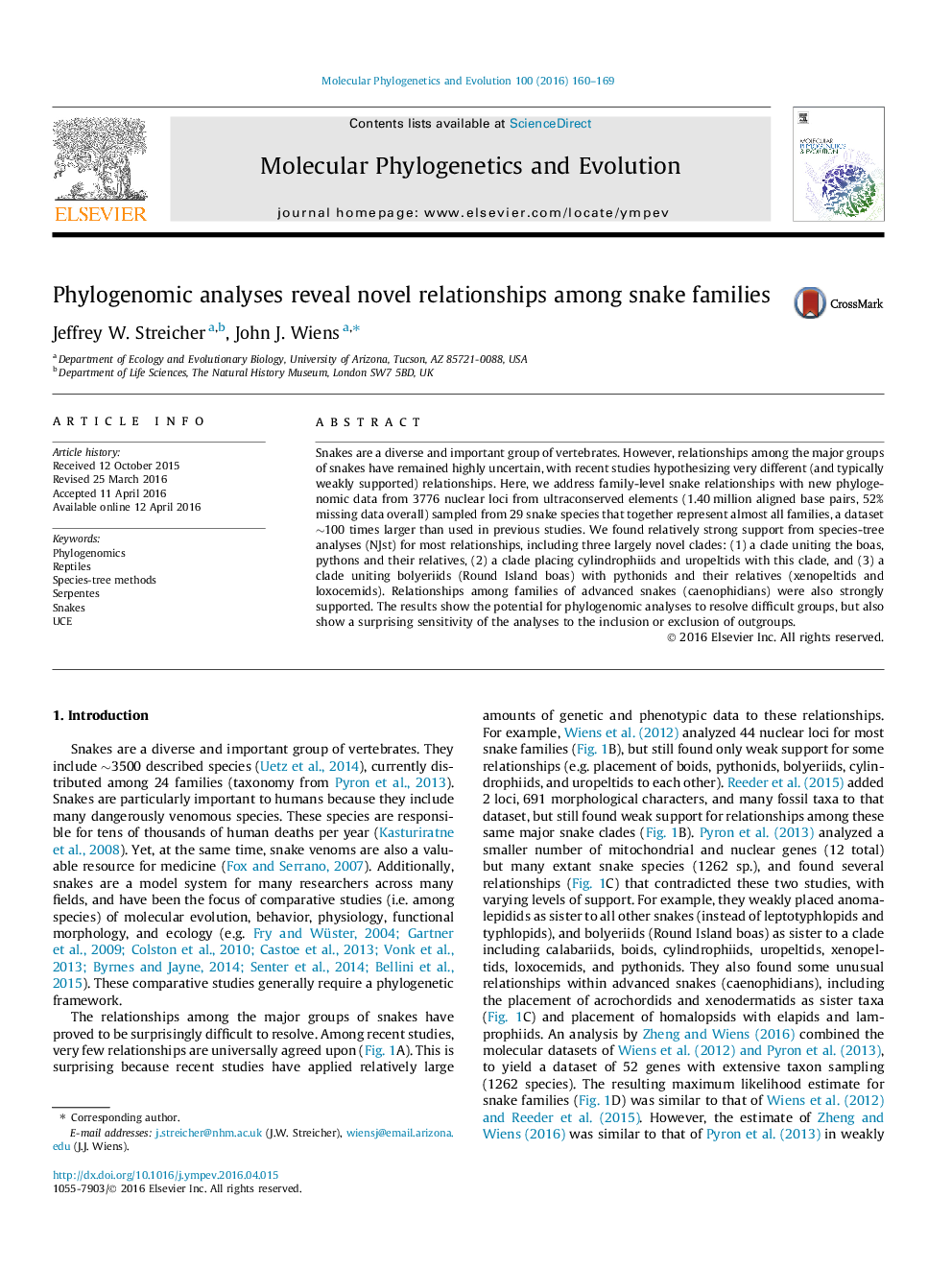| Article ID | Journal | Published Year | Pages | File Type |
|---|---|---|---|---|
| 2833660 | Molecular Phylogenetics and Evolution | 2016 | 10 Pages |
•Higher-level relationships of snakes have been difficult to resolve.•We obtained data from 3776 nuclear UCE loci across almost all snake families.•Species tree analysis strongly resolved most higher-level relationships.•The analyses also revealed novel clades not seen in most recent studies.
Snakes are a diverse and important group of vertebrates. However, relationships among the major groups of snakes have remained highly uncertain, with recent studies hypothesizing very different (and typically weakly supported) relationships. Here, we address family-level snake relationships with new phylogenomic data from 3776 nuclear loci from ultraconserved elements (1.40 million aligned base pairs, 52% missing data overall) sampled from 29 snake species that together represent almost all families, a dataset ∼100 times larger than used in previous studies. We found relatively strong support from species-tree analyses (NJst) for most relationships, including three largely novel clades: (1) a clade uniting the boas, pythons and their relatives, (2) a clade placing cylindrophiids and uropeltids with this clade, and (3) a clade uniting bolyeriids (Round Island boas) with pythonids and their relatives (xenopeltids and loxocemids). Relationships among families of advanced snakes (caenophidians) were also strongly supported. The results show the potential for phylogenomic analyses to resolve difficult groups, but also show a surprising sensitivity of the analyses to the inclusion or exclusion of outgroups.
Graphical abstractFigure optionsDownload full-size imageDownload as PowerPoint slide
